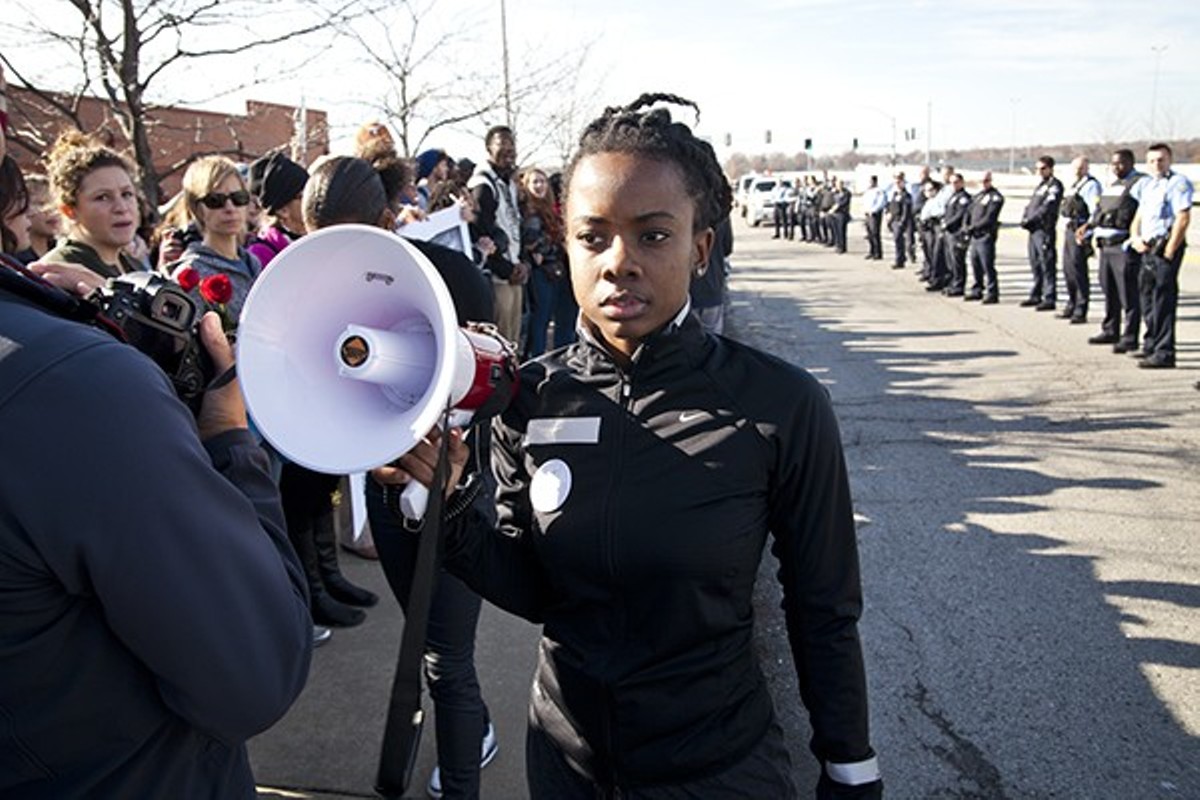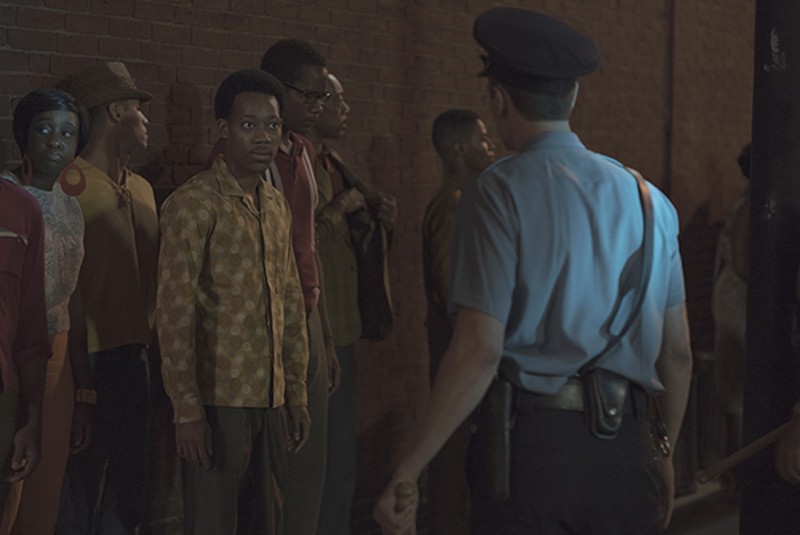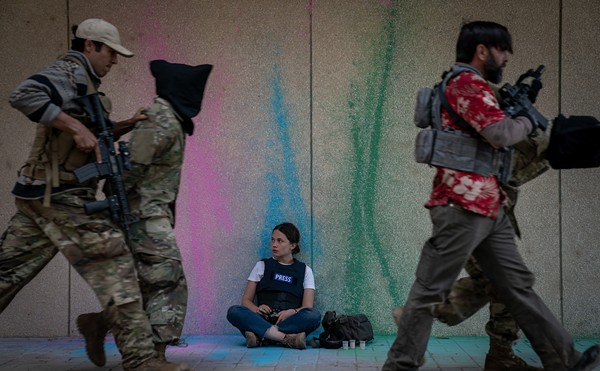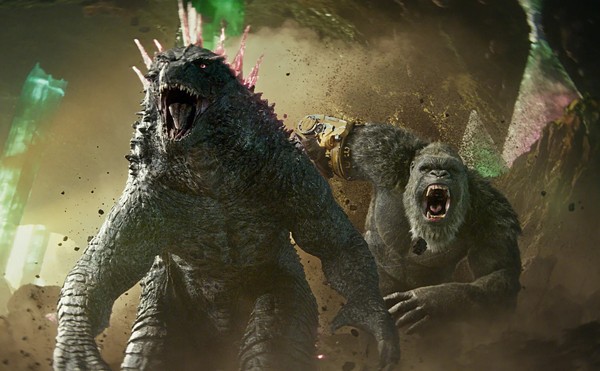You probably remember the unbearably hot Saturday afternoon in August 2014 when a story popped up on your news feed that an unarmed teenager had been shot by a police officer. For the next few hours, the story kept getting bigger: the growing community outrage, the impromptu protests and, almost as alarming as the shooting itself, the fact that the teenager's body was still lying on the burning street. It was that last detail that might have left you thinking, "Are the police trying to start a riot?"
Over the next 24 hours, news (and inevitably, tweets and Facebook posts) continued to pop up, and surprisingly, they weren't just coming in from local media. The death of Michael Brown quickly became a national and eventually international story. From Los Angeles to New York, in the U.K. and France and even China, where human rights protesters adopted the "Hands up! Don't shoot!" chant, the world was looking down on a place few had ever heard of before: Ferguson, Missouri.
Whose Streets? captures the energy and pain of that hot week in August and the months of protest and conflict that followed, when thousands of people in the St. Louis area took to the streets, and when those same streets were invaded by tanks and other armored vehicles, the products of the increasing militarization of local municipalities that was (and continues to be) encouraged by the government's willingness to function as a military outlet mall. Whose Streets? brings the frustration and outrage of that period to life and places the viewer in the center of the action.
A collaboration between activist filmmaker Sabaah Folayan and local artist Damon Davis, it's a powerful film and a necessary one, serving as both a cohesive catalog of the repercussions of Michael Brown's murder and a document of the grassroots protest movement that spontaneously emerged from his death. It shows the aftermath of Brown's shooting — including the pettiness that moved government officials to eliminate the memorials created at the scene — but also offers inspiring portraits of some of the activists who were motivated to advocate for justice. These activists include Brittany Ferrell, a young single mother arrested while leading a highway-blocking protest, and David Whitt, who lived by the murder scene and started Copwatch, which used video to counter police efforts to stop media coverage of the protests.
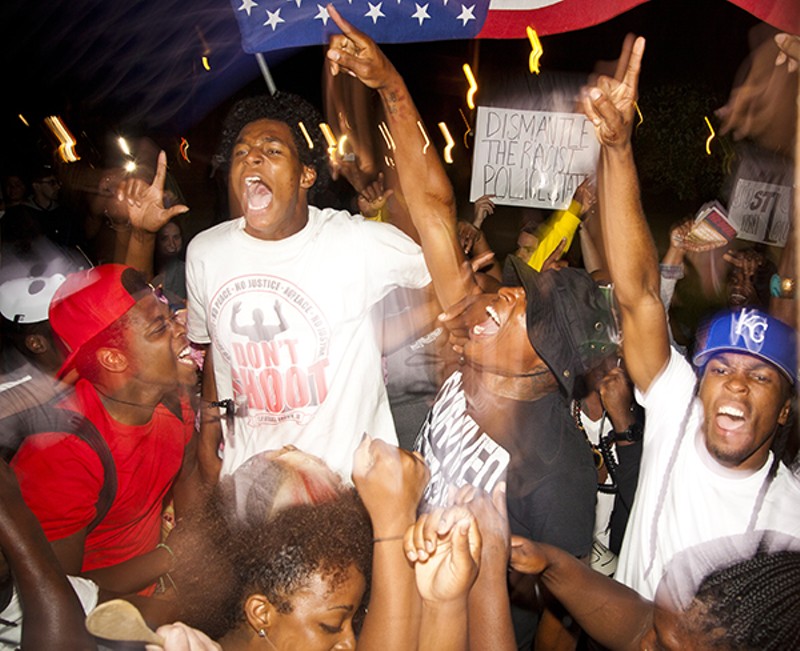
Folayan and Davis try to convey what these new young activists are thinking and how they made the decision to rise up — an emotional choice, but one produced by reason. (The filmmakers enjoy lingering over the bookshelves of their subjects, showing the titles and authors that inspire them.) Things may have happened fast, but this was not a movement that came from nowhere.
This is also, of course, a product of the hand-held revolution. Michael Brown's death is shown in fragments of cell-phone video and stunned reactions from the people of Ferguson — which is how most of us learned about it that Saturday. We are in the middle of a multimedia explosion, and it's not entirely clear where it's going. The whole world is watching and we're watching the whole world, but we're a little short on tools to help us sort out what we're constantly accessing. While there are reasons to remain skeptical of the utility of the viral video (as Michael Eric Dyson recently pointed out in the New York Times, we have recently seen acquittals in several cases in which police killed unarmed men, even though the murders were captured on video and even, in one case, carried out on Facebook Live), Whose Streets? provides a lesson in the use of video as a political and journalistic instrument.
It might be interesting to see a more analytical film about Michael Brown and Ferguson, with legal experts and journalists, or commentators such as Ta-Nehisi Coates (whose brilliant book Between the World and Me was written in reaction to the grand jury's decision not to indict Darren Wilson). But that's a different film for a different time. Whose Streets? is about living in the thick of the event. It's not a reaction; it's an experience.
Whose Streets? uses multiple perspectives and on-the-scene footage to turn the 2014 protests into an immersive event; Kathryn Bigelow tries for a similar feeling in the first 30 minutes or so of Detroit, which is based on the riots in that city 50 years ago.
On a superficial level, she achieves it. The first scenes, in which citizens of Detroit respond to a heavy-handed arrest with violence and looting, use an expansive, multi-layered soundtrack to create a sense of being right in the thick of the burning streets, but they're all technique and no context. Aside from an illustrated prologue explaining that the twentieth century saw blacks moving from the South to cities in the North, followed by a second migration of whites from city to suburb, the film doesn't do much to help the audience understand the '67 riots from a historical or social perspective. In fact, many of the decisions made by Bigelow and screenwriter Mark Boal actually undermine any understanding.
The dramatic core of Detroit is inspired by the Algiers Motel Incident, in which three black teenagers were murdered and nine other people were terrorized by city police and state troopers. Bigelow reduces the nightmarish situation to a horror-film siege, the trouble coming not from police brutality or systemic racism but from a pair of out-of-control cops who would be more comfortable as the murderers in a low-budget remake of In Cold Blood.
By reducing the conflict to a handful of characters with audience-friendly back stories (the nastier of the two cops is about to be charged with homicide; two of the black teens are aspiring entertainers on the verge of a record deal), it softens our interpretation of the story. We're meant to see injustice, but it's not because the film reveals an institutional flaw. It's simply that characters we're supposed to like are treated unfairly.
It takes courage to make a film like Detroit, but ultimately the courage of Bigelow and Boal is defeated by a reluctance to show a larger target. By reducing the first days of the 1967 riot to unmotivated acts of vandalism and looting (and not showing any of its aftermath at all), they encourage the same narrow point of view that you probably heard expressed by people whose only knowledge of the Ferguson protests came from what they saw on the local news. Detroit tells us (roughly) about something that happened 50 years, but doesn't really tell us why. Whose Streets?, a more daring and honest film, lays down its historical background, pulls the viewers in and tells them what's going on now.

